
In an era where security concerns are increasingly shaping travel decisions, not just in Europe but worldwide, Corsica emerges as an ideal destination for those seeking a safe and tranquil holiday. As the continent grapples with various socio-political challenges, travellers are becoming more discerning about their choices.
Corsica, with its low crime rate and welcoming atmosphere, offers a consoling respite from these growing uncertainties. The island’s remarkable safety, coupled with breathtaking landscapes and rich cultural heritage, makes it a great choice for tourists seeking first-class recreation without worry.
Continue reading to find essential information and travel advice for a safe stay on the Island of Beauty.
This page contains affiliate links meaning I get a commission if you decide to make a purchase through my links, at no extra cost to you. Click here to learn more.
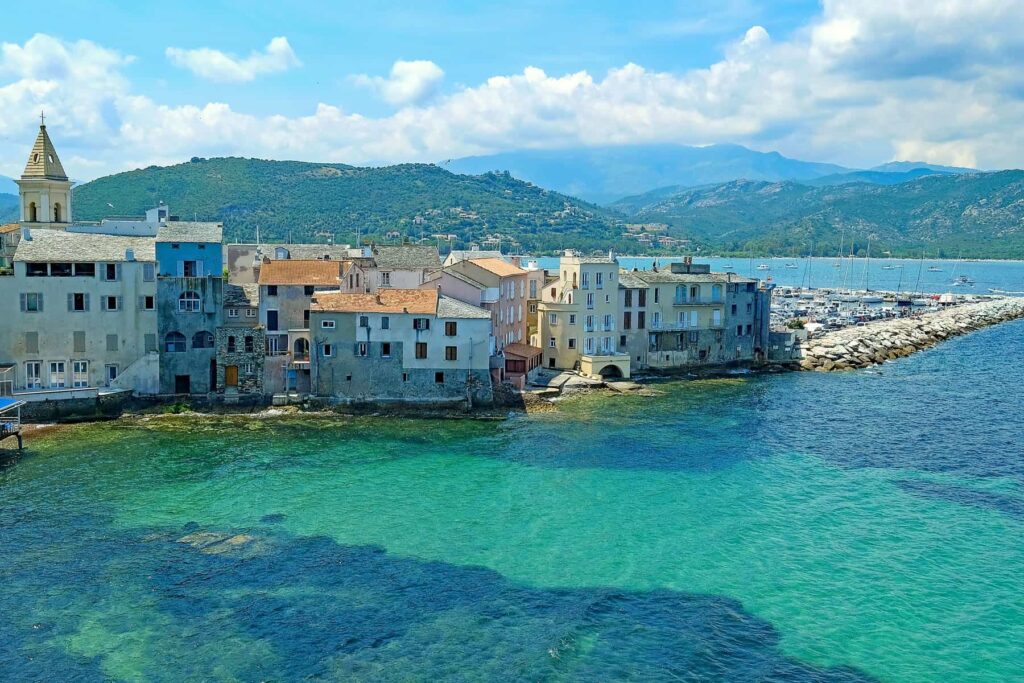
IN A NUTSHELL
Corsica is widely regarded as one of the safest tourist destinations in the Mediterranean. It is a welcoming and secure place where the natural beauty and the warmth of its people can be truly appreciated.
It is important to note that while the island may encounter various internal challenges, they don’t compromise the safety or enjoyment of its guests. Corsica’s deep-rooted sense of hospitality, one of the essential aspects of its identity, ensures that tourists can explore peacefully at any time of the day or night. Children are particularly cherished, and a true sense of solidarity is extended to those who genuinely engage with the island’s rich local culture and its inhabitants.
What to avoid in Corsica – 11 common mistakes
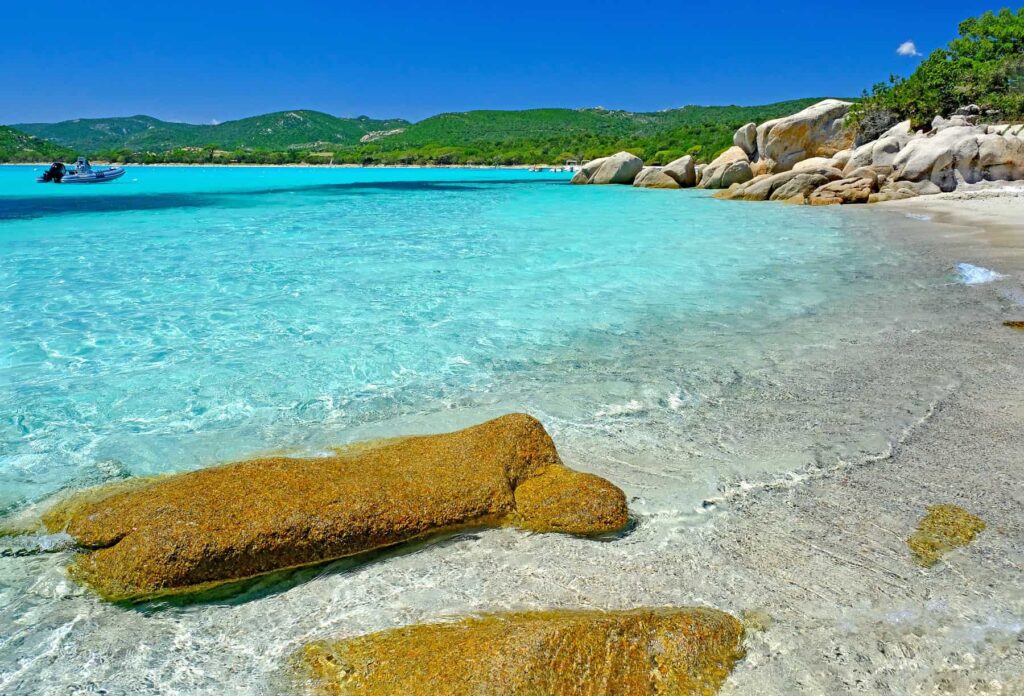
THE CORSICAN PARADOX
While Corsica remains a safe oasis for tourists, offering them a serene and secure environment to explore innumerable attractions, it also grapples with internal conflicts that have profound implications for the inhabitants.
SAFETY AND SECURITY FOR TOURISTS
Petty crimes such as pickpocketing or theft are incredibly rare in Corsica. If you happen to leave your belongings on the beach, upon your return hours later, you will almost certainly find them in the same spot.
Or you might forget to lock your car with all that you carry inside. Don’t despair, it is very unlikely that you will need to visit a police station in search of a stolen vehicle or other goods.
The same applies to home security. According to official statistics, only 1.3 burglaries or attempted burglaries per 1000 homes were recorded in 2022, the lowest rate in metropolitan France.
Corsica relies on tourism, which constitutes the most important pillar of the local economy. According to Insee (National Institute of Statistics and Economic Studies) it makes up 39% of its total, compared to the continental counterpart’s 7%. The island’s firm reputation as a safe place for travellers is highly valued by the residents as it ensures a steady influx of visitors who, in turn, provide their yearly livelihood.
Corsica’s depiction of security is further reinforced by its unofficial status as a prestigious destination favoured by celebrities and VIPS. Indeed, many establishments such as the fabulous Grand Hotel Cala Rossa & Spa in Porto Vecchio have been known to welcome the rich and famous.
However, the luxury trend is also driven by often incredibly high prices of transport services, flights and ferries, that provide connections between Corsica and European cities. In the summer of 2024, many operators started offering discounts on ticket fares to encourage wider access to the island.
CORSICA’S INTERNAL CONFLICTS
The island has a history of nationalist movements seeking greater autonomy from France. For some years, Corsica’s executive and legislative bodies have been led by nationalists with ongoing demands for autonomy, such as recognition of the Corsican people, the co-officiality of the Corsican language, and constitutional changes to reflect the mentioned aspirations.
These cultural and political tensions may manifest in an anti-French sentiment, sometimes leading to violent actions. A notable incident took place in 2023 (‘blue night’) when second homes owned by non-Corsicans living on the mainland were targeted in a series of attacks.
Such actions are also motivated by economic concerns. The separatists argue that the influx of wealthy outsiders leads to real estate price inflation, making it difficult for native Corsicans to afford homes. Environmental worries point to possible degradation of land caused by unchecked development.
Additionally, Corsica has a history of organised crime and a high per capita murder rate, combined with low felony detection.
Although these internal issues do not impact the safety of visitors, they contribute to the perception of the island’s complicated identity.
AJACCIO IN THE SAFETY RANKING
Ajaccio, Corsica’s capital city, is known as a welcoming, vibrant, and above all, safe destination for travellers. According to an annual ranking of the safest French municipalities featured in Le Parisien-Aujourd’hui in 2024, Corsica’s capital proudly boasts a third position. The research has been presented by the Ministry of the Interior from the Ministerial Statistical Service for Internal Security (SSMSI).
Ajaccio – the capital city of Corsica
Best things to do in Ajaccio in one day – the complete guide
BOOK A CULINARY/CULTURAL EXPERIENCE IN AJACCIO
Enjoy a Corsican meal while learning fascinating facts about the life of Napoleon Bonaparte at the Napoleon Cave. This comprehensive cultural experience may be booked in advance.
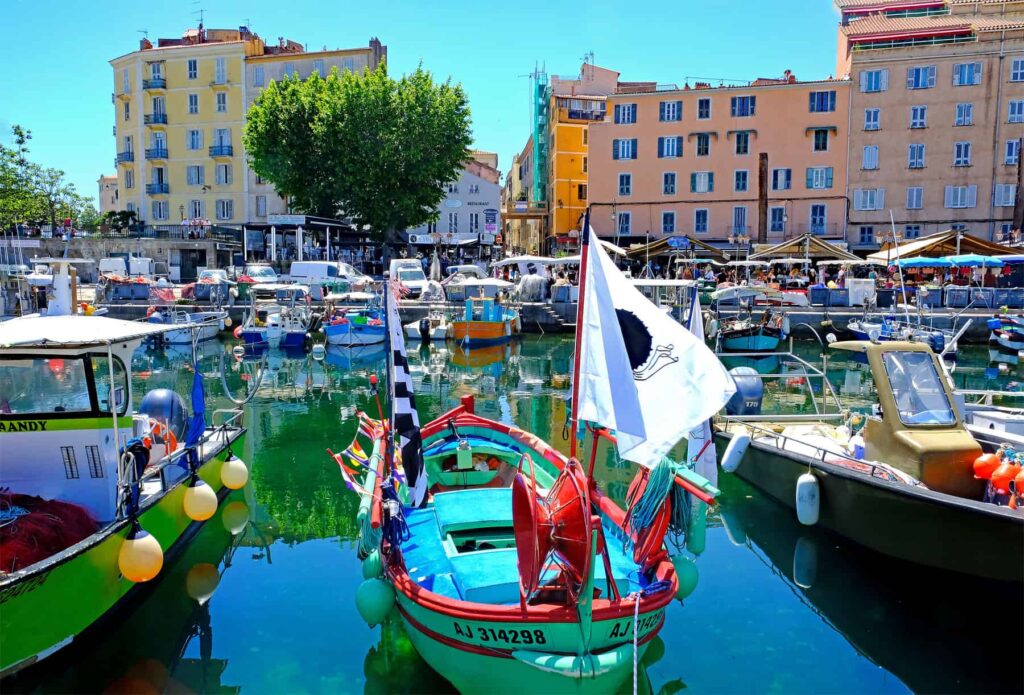
IS CORSICA SAFE FOR FEMALE SOLO TRAVELLERS?
Corsica is considered a safe destination for solo female travellers. There is no need for journeying girls to avoid or fear social interaction, as the local population, although direct, is welcoming and open. If approached in a friendly manner, the Corsican residents will show cordial interest in the visitor’s circumstances and will be happy to help out or offer advice.
FAMILY-FRIENDLY ISLAND
Not only that, the island is also a favoured place for people willing to raise a family in a secure, child-friendly environment. Corsican kids enjoy remarkable freedom, have access to innumerable outdoor activities and benefit from traditional family bonds characterising multi-generation-focused societies.
As always, though, it is smart to be aware of the surroundings and use normal precautions and common sense to ensure the most enjoyable visit.
Best things to do in Corsica with children
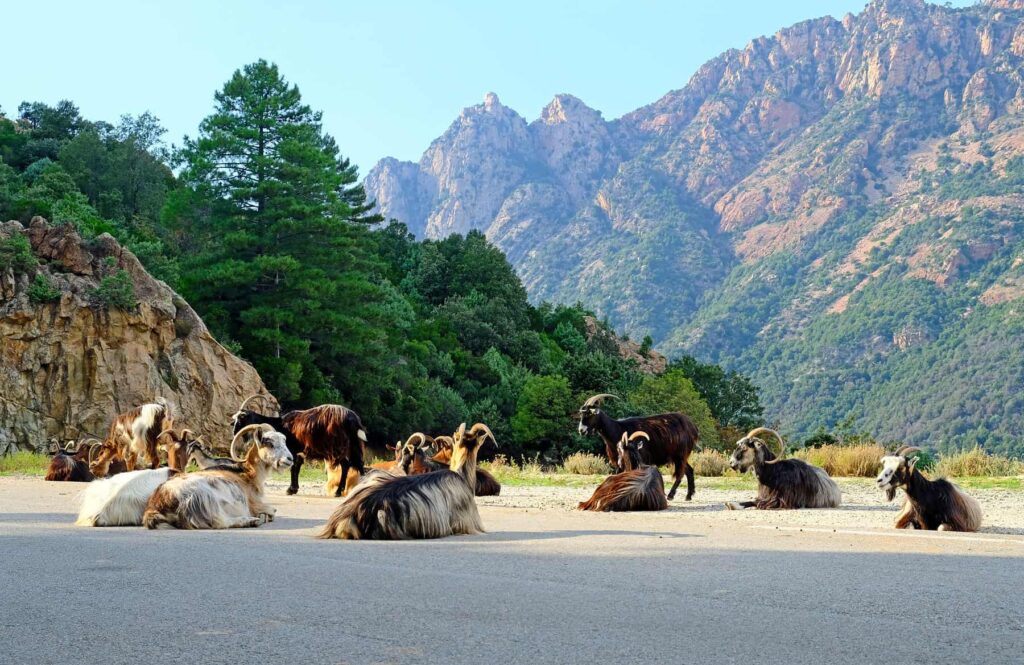
ROAD SAFETY
Corsica is an incredibly scenic island boasting some of the most beautiful scenery not just in Europe but in the world, making it heaven for road trip enthusiasts. Due to its unique geography, with high snow-capped mountains and dramatic cliffs plunging into the west coast’s deep sea waters, driving on the island’s roads can be challenging.
The following considerations will help you plan safe and enjoyable travels.
- The Corsican roads are narrow and winding. In fact, the only straight stretch runs along the east coast connecting Bastia in the north with the famous medieval town of Bonifacio on the southern tip. Otherwise, be prepared for sharp bends, limited visibility and an average driving speed of 35km/h.
- Epic corniche roads around Porto demand focus and concentration. The breathtaking beauty of the UNESCO-inscribed scenery of Calanches de Piana and Scandola Nature Reserve may capture your attention, but stay vigilant. The dizzying cliffs above the sea are protected only by a low wall. The latest accident claimed a life in August 2024 when a young man fell 150 meters into a ravine.
- You will encounter wildlife when driving on the island. Free-roaming pigs, goats, and cows are well known to cross even the main roads. Adapt your driving speed if you see animals grazing by the road.
- In summer, expect heavy traffic on the scenic routes. Roads in peak season become congested, and driving may require patience and technical manoeuvring.
- Beware of rapidly changing weather conditions. During periods of heavy rain and thunderstorms, the surface becomes slippery, and visibility on the sinusoidal roads is extremely limited.
- Driving etiquette is not what you may anticipate. Corsicans drive quickly, often cutting corners in places where you least expect it. To be safe, always stay in your lane, slow down before a sharp bend on a narrow road, and if needed, let faster cars overtake you by stopping in the parking bay.
HIRE A DRIVER TO VISIT THE AJACCIO REGION
Cruise ship passengers and other visitors looking to enjoy their custom day itinerary around Ajaccio and the surrounding regions may hire a driver or even upgrade to include a private tour guide. Guests are welcome to choose their preferred time and place of departure. Private tours last for up to 8 hours and are also offered in English.
Driving in Corsica – tips and scenic routes ideas
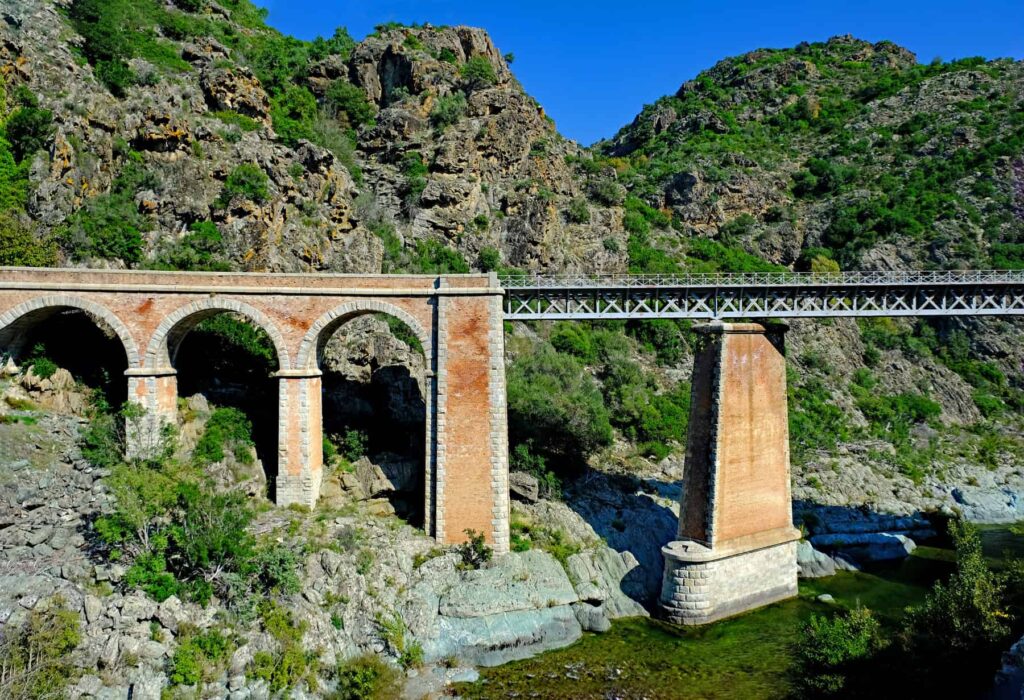
SAFETY ON PUBLIC TRANSPORT
Compared to other French regions, public transport in Corsica is limited, servicing major cities with fewer options available in smaller towns. Trains and buses form a regional conveyance network with taxis assisting in remote areas without coverage.
Although modest when it comes to frequency and infrastructure, Corsican public transport is known to be safe and, for the most part, free of petty theft, pickpocketing, or assaults. Customers primarily include tourists, students from the University in Corte, and commuting residents.
Hitch-hiking is also a popular way to cover distances on the island. Aware of transportation challenges, the locals are happy to aid with getting to the desired destination.
Standard precautions, vigilance and common sense will ensure a smooth travel experience.
Getting around Corsica – do you need a car?
Wine lover’s companion for a trip to Corsica – Grab your ebook!
Corsica Wine Guide – from vine to glass
✓ 9 wine regions
✓ 74 producers
✓ 125 wines
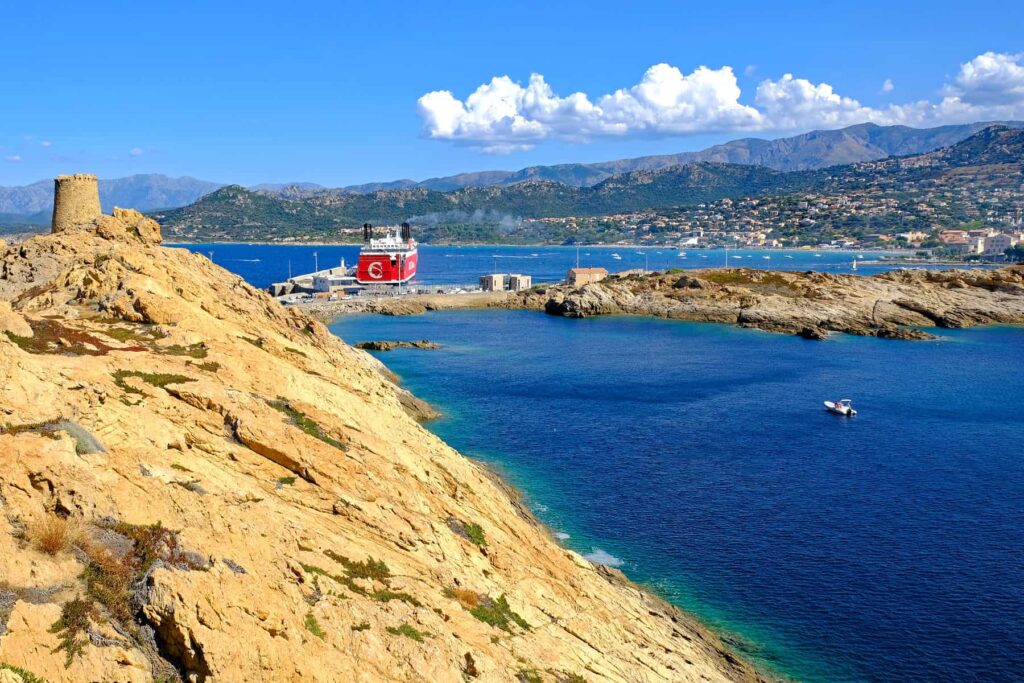
STRIKES AND DEMONSTRATIONS
Strikes and demonstrations are ingrained in French culture as a way to express grievances, demand change and hold the government accountable for social and political decisions or actions.
Corsica also experiences organised protests focused on ongoing challenges affecting the local population, though they are infrequent.
In 2024, unionised workers of ferry crossing providers, Corsica Linea and La Meridionale, held a strike regarding their ‘public service delegate’ status and funding. This, in turn, disrupted ferry services between the island and Corsica, causing delays and cancellations. Visitors were informed about the developing situation via text messages and official announcements. Eventually, the situation was resolved, but indeed, it became a nuisance for travellers.
Visiting Corsica – how to get there?
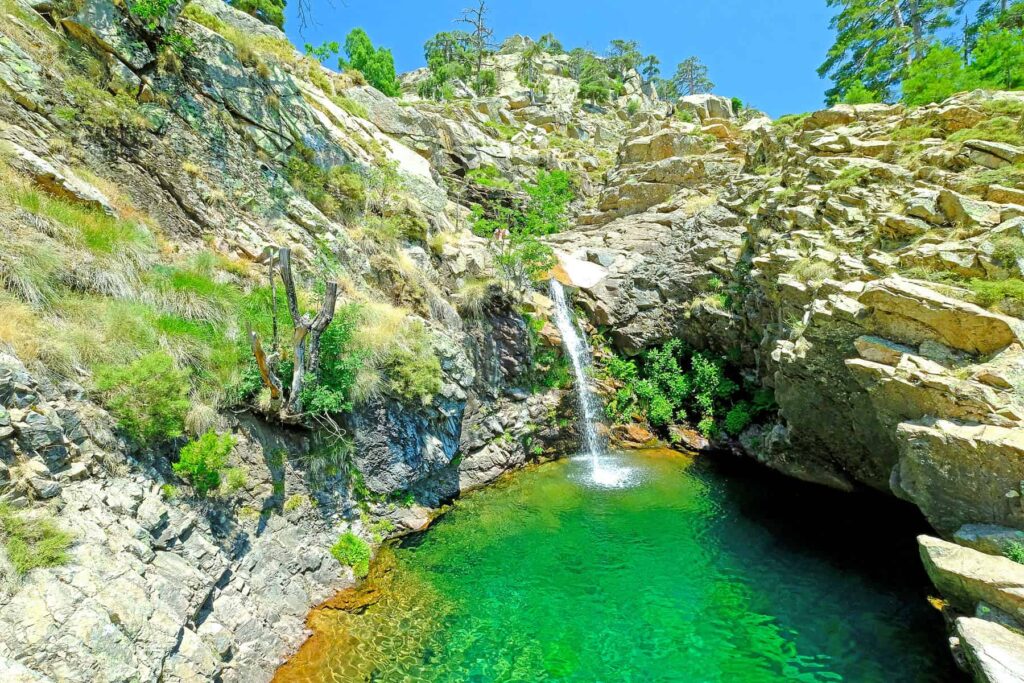
NATURAL HAZARDS
HEATWAVES
Corsica’s coastal areas are marked by a Mediterranean climate characterised by hot, dry summers and mild winters. Receiving over 2700 hours of sunshine annually, the island is one of the sunniest areas in France. In summer, average day temperatures reach around 27°C.
In July and August, Corsica may experience heatwaves with the hot Sirocco wind from the Sahara intensifying the weather phenomenon. Lasting for up to two weeks, the periods of hot weather when temperatures soar into the high 30s°C affect both tourists and residents. Luckily, you may implement various strategies to mitigate the discomfort.
- Firstly, avoid going out at midday when the sun is at its strongest. Most of Corsica’s accommodation base is equipped with air conditioning that will help you cope with the heat and ensure a restful night.
- Secondly, drink plenty of fluids to stay hydrated. Electrolytes are, at this time, your best friend.
- If you decide to go out, head to the mountains. In the upper Asco Valley, temperatures may be even 10°C lower than in its lower part. The cool water of the torrent relieves the heat-stricken body while the surrounding trees provide much-needed shade.
- During the heatwave, known as canicule, avoid the inland towns such as Corte or Ponte Leccia where heat accumulates, trapped by the surrounding peaks.
- Spend the evening on the coast where the sea breeze refreshes the air.
STORMS
Sadly, there have been several fatalities over the years due to intense Corsican storms. As the Mediterranean weather offers mesmerising nature spectacles, people often underestimate the potential risks involved in exposing themselves to their unmatched force. The following tips will help you stay safe and secure when the tempest arrives.
- If you are outside during the storm, take shelter immediately in the nearest building. This also applies to people camping in tents.
- Stay away from windows, doors and balconies.
- Avoid contact with conductors of electricity and metal objects.
- If you are on the beach, get out of the water immediately and seek shelter.
- If you are out on a boat, head back to the shore as quickly as possible. Weather changes rapidly in Corsica.
- Stay away from trees, poles and fences.
- Always check weather forecasts before planning an activity in nature, be it on the water or in the mountains.
TRAVELLER’S COMPANION FOR A TRIP TO CORSICA – GRAB YOUR EBOOK!
33 Natural Pools and Waterfalls in Corsica
Descriptions – Directions – Coordinates
FLOODS
Corsica’s topographic profile and its climatic characteristics, with high mountains and maritime influences, favour abundant precipitation, especially in autumn, in February, and in March. August sees sudden, often brief but violent storms.
Thunderstorms and heavy rain may be accompanied by flooding, one of the leading natural hazards in Corsica. Both the overflowing rivers and marine submersion are recurrently affecting the island.
The Mediterranean flash floods in the mountains are particularly dangerous. Due to narrow stream beds, steep terrain and limited soil absorption, rivers swell up quickly, causing considerable damage to infrastructure, but also endangering human life.
The most important safety measure is to stay informed (via Meteo France) and never set out in bad weather. In case of danger, value your safety over belongings and seek higher ground immediately, avoiding areas where water can accumulate. Beware of landslides, especially on steep slopes where soil and loose rocks may be carried by water.
In 2023, Restonica, one of Corsica’s most beautiful rivers, was affected by heavy rainfall, resulting in partial destruction of the scenic D623 road.
Read more about how to access the famous valley
FIRES
With hot summers and strong winds such as Mistral or Sirocco, Corsica is susceptible to the maquis and forest fires. The risk mostly occurs in the hard-to-reach, mountainous regions, making firefighting efforts challenging.
In the past years, regions such as Calenzana or Cap Corse saw territories exceeding 1000 hectares burned out, an emergency that sometimes required evacuations.
On the upside, the Corsican firefighters are very well prepared to manage and mitigate the impact of fires. Risks are assessed and communicated daily, you will most likely encounter large red trucks parked on the side of the road, ready to act. Aerial support, such as planes dumping water and fire retardants, is often employed in geographically isolated places.
Hikers may find that certain sections of trails remain inaccessible if the fire risk is elevated. To check the current situation, consult the official Prefecture website https://www.risque-prevention-incendie.fr/corse/. The affected areas will be highlighted on the map as well as on the list next to it. Alternatively, you may verify the Facebook page of Corsica’s Regional Natural Park https://www.facebook.com/ParcNaturelRegionalCorse/, where the latest information is updated daily.
EARTHQUAKES
Seismic risk is not a significant concern for the island. Historically, there were only a few earthquakes in Corsica, all of low magnitude.
What to avoid in Corsica – 11 common mistakes
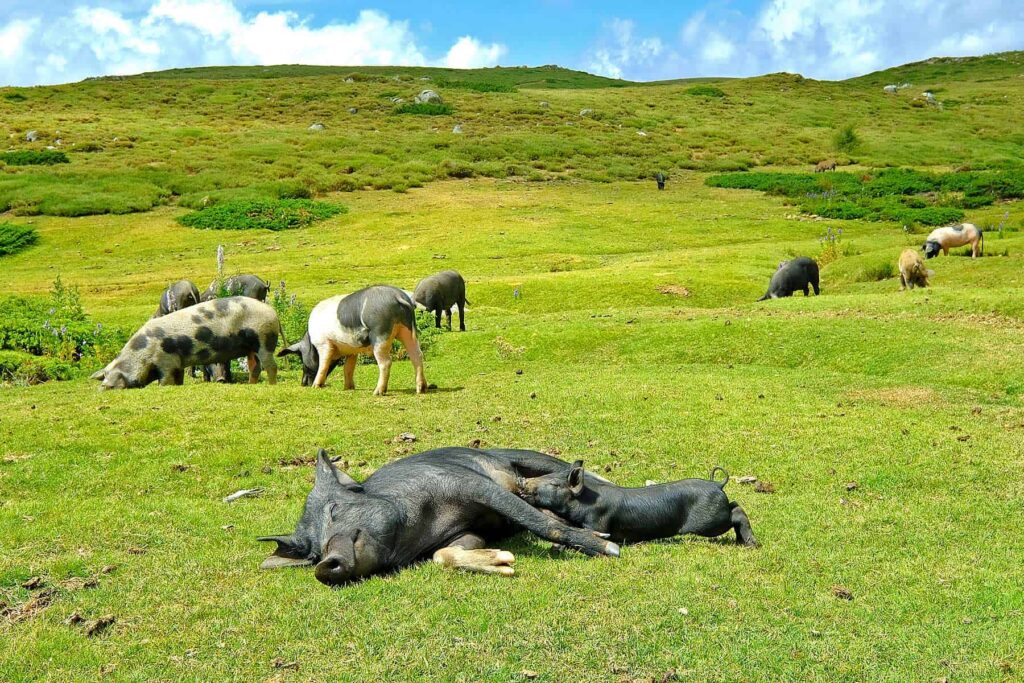
HAZARDOUS ANIMALS
COWS
Corsica has a large cow population oscillating around 15,000. The animals are accustomed to roaming freely by the roads, in the mountains or even on some beaches. Although normally docile, cattle may behave aggressively when stressed, threatened, or when nursing the young. There have been notable incidents on the island where cows have attacked or chased people, both residents and tourists.
To ensure safety when encountering cows in Corsica, follow the following recommendations.
- Stay calm. When approached by a cow, don’t run but rather turn around and quietly walk away without provoking the animal.
- Keep distance. Maintain a safe distance from the herd, don’t approach them, especially if you notice young calves or aggressively-behaving bulls.
- Wait for them to pass. Respect the animals’ space by allowing them to make their way if they happen to cross your path. Don’t force your presence upon them.
- Don’t try to stroke the cows. The animals may behave unpredictably.
- Don’t feed the animals.
FREE-ROAMING PIGS
If you plan to travel across the island via mountain roads, inevitably, you will encounter the Corsican pigs grazing on unfenced pasturelands and hills. The traditional practice of free-range pig farming is oriented towards the production of the highest-quality cured meats and sausages. The animals feed on abundant chestnuts and acorns.
Not only, though. These cute hungry creatures will also happily hunt your lunch, imposing, without pardon, their stocky bodies on your picnic blanket.
As a rule of thumb, hide your food in the presence of porcu nustrale and you will be fine.
GOATS
Goats can also be found roaming freely on roads in Corsica. Their presence can create hazards for drivers, especially on narrow or winding mountain routes where visibility is limited. Tourists driving in these areas need to be cautious to avoid accidents.
Corsica’s rugged western territory is particularly known for the appearance of these iconic hardy animals. On the scenic D84 road between Porto and Evisa, you will find a stretch (marked as chèvres on liberte on the map) where you may admire goats in their natural, mountainous habitat.
BOOK A GUIDED BIKE TRIP TO WATCH WILD ANIMALS
Enjoy an exciting guided bike tour of Plateau du Coscione, where you will experience Corsica’s natural paradise of green meadows, crystalline pozzines, and diverse wildlife. Lunch made of local products is included in the price.
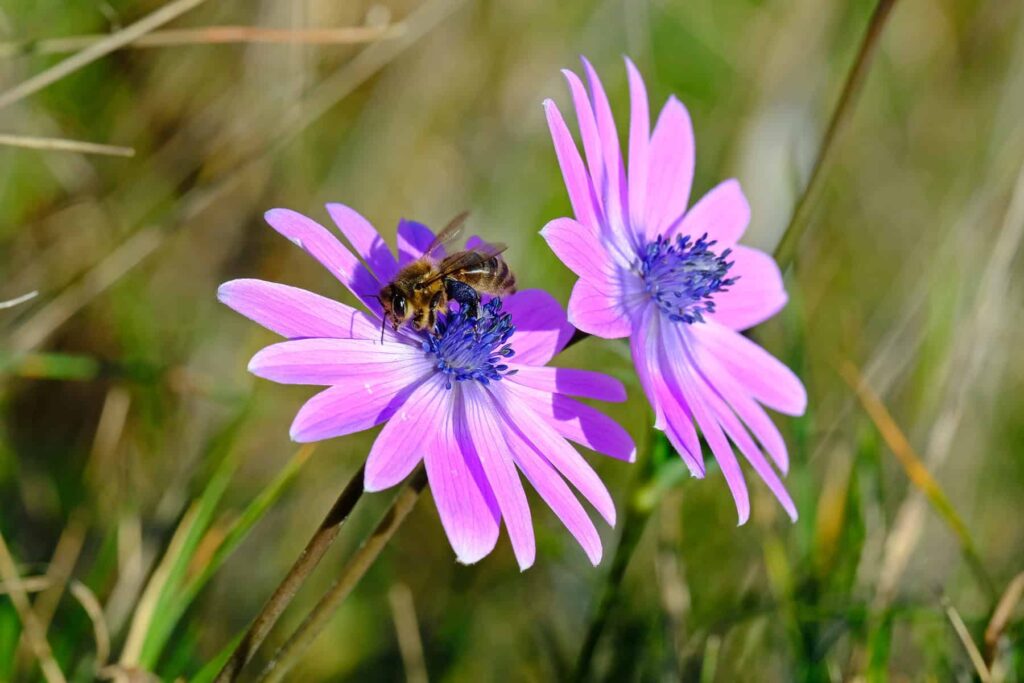
HAZARDOUS WILDLIFE
MOSQUITOS
In the past, Corsica used to be infested with malaria-spreading mosquitoes, but intense insecticide spraying campaigns undertaken after World War II led to excellent results. Local populations who resided in the malaria-free mountainous regions settled in the coastal areas, developing thriving communities.
Today, mosquitoes are a nuisance, especially during their most active period, between late spring and early autumn. If you are planning an al fresco dinner or an evening stroll, use a light repellent to protect yourself from the unpleasant bites. The golden hour, at dusk, is when mosquitoes come out in large numbers, but as soon as the night falls, they tend to disappear.
Humid areas, near lakes and wetlands, but also gardens with standing water, are most affected by the presence of the hungry insects. As for the beaches, it is predominantly the shores of Corsica’s east coast that receive abundant mosquito infestation.
If the windows of your house or apartment are screen-free, leave them shut to keep out the bugs and ensure a restful night. If you get bitten, try not to scratch the skin; the discomfort will ease out fairly quickly.
TICKS
Ticks in Corsica are most often encountered in the vicinity of animal-rearing pastures. The species present on the island thrive in warm, dry conditions of the Mediterranean climate but are not generally known to transmit the Borrelia bacteria. However, upon return from outdoor walks, inspect your body for the presence of these small insects. Ticks may be removed with tweezers or a tick remover (available in pharmacies). If you see a red halo on the skin, consult a doctor, as a course of antibiotics may be necessary.
ANTS
Watch out for small black ants present in lower altitudes of the island. Known as Tapinoma Magnum, this invasive species has become increasingly bothersome in the Corsican gardens and houses. Be careful not to step on the ants’ nest as they can climb your calves very quickly. If threatened, they may sting leaving behind a burning sensation. Insecticides (white powder) intended for outdoor areas available in local shops are only effective for a couple of days and have to be reapplied regularly.
WASPS
If you plan a picnic with friends on the beach, you may soon find that you also have unwanted guests crashing your party. Wasps are attracted by food and may seek protein and sugar to feed their carnivorous young. If the insects arrive, remain calm and resist flapping your arms, and it will limit the risk of getting stung. Cover the food with a cloth, the insects might get discouraged and leave you in peace. Sometimes, providing a small piece of food a distance away will lure wasps, allowing you to finish your meal. Standard repellents used against mosquitoes tend to work with other insects, too.
JELLYFISH
Stormy weather, strong winds, and currents can bring jellyfish to the shore, making swimming impossible. As the occurrence of these floating sea creatures is unpredictable, always inspect the seawater before going in. As a rule of thumb, if you notice that nobody is swimming despite being present on the beach, it is most likely due to the jellyfish. Once washed up on the shore, they die fairly fast.
Jellyfish stings are painful and can cause red marks, itching or even burning, but luckily, in most cases, they remain mild. People with weak immune systems, children, and the elderly should consult a pharmacist or a doctor. Antihistamines and cortisone-based creams can relieve the pain, itching and swelling.
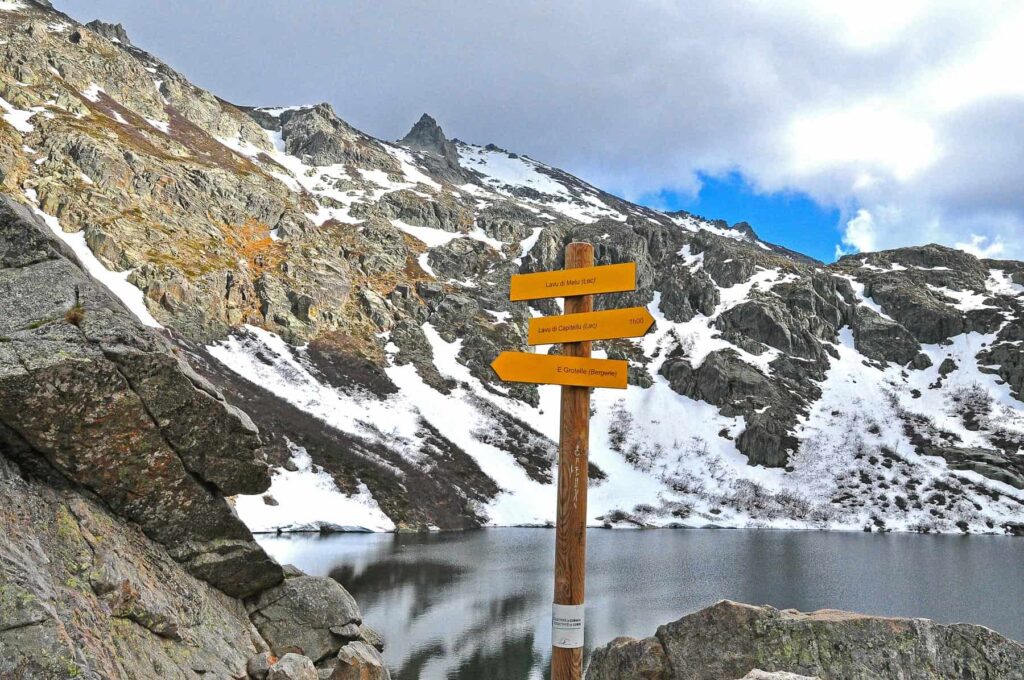
RISKS IN OUTDOOR RECREATION
SWIMMING
As only some of Corsica’s beautiful beaches are lifeguarded, you should follow a few simple rules to reduce the risks and fully enjoy the seaside fun.
- If you plan long-distance swimming, always check weather reports for possible storms and winds. In August, they may arrive rapidly in the midst of a sunny day.
- Keep your activities within your fitness level and swimming capabilities.
- Don’t swim alone, or at least tell someone where you are going.
- Enter water cautiously; on some beaches, you may encounter sudden drop-offs and changes in water depth.
- If you get caught in a rip current, don’t fight it; swim parallel to the shore until you are out of it, and then start returning.
- Swim sober.
HIKING
Corsica is one of Europe’s top destinations for lovers of hiking and the outdoors, however, this rewarding activity is not without its risks and challenges. The island’s mountains bear witness to several fatal accidents usually caused by bad weather conditions, landslides or falls. GR20, the legendary long-distance trail, also claims lives with the latest tragic incident at the beginning of the hiking season in spring of 2024.
To ensure a safe and enjoyable experience on the Corsican trails, the travellers must be well prepared physically but also take into account specific precautions and security measures.
- Corsican trails are known for rugged, rocky paths. Essential gear to tackle the difficult terrain includes sturdy hiking shoes, hiking poles, and protective clothing shielding from the sun, wind, and rain.
- The weather in Corsica may change rapidly, even if the day starts sunny and wind-free. You must always check weather reports before setting out on a trail. Postpone your trip in case of storms, rain, and very strong winds.
- As mobile phone coverage is sporadic in the mountains, reliable navigation and communication tools are very useful (the author uses the Garmin Fenix GPS smartwatch and the Garmin inReach satellite communicator).
- When hiking, sufficient water and food are essential to ensure hydration and good energy levels. Filtered water bottles, removing microbiological contaminants, give access to water from Corsican streams.
- In summer, the risk of fires is significant. Be cautious with any activities that could start flames and check beforehand which trails are available for trekking.
- Easy Corsican hikes also require adequate preparation. Focus on good sun protection (SPF sun cream, sunglasses, and a wide-brimmed hat), comfortable shoes, and hydration.
BOOK A GUIDED HIKING TOUR IN BAVELLA
Enjoy a guided hiking tour to explore the classic landscapes at Col de Bavella. The excursion starts at the Bavella pass by the statue of Notre-Dame-des-Neiges. You may choose a half-day or a full-day scenic walk at the foot of the famous granite Needles. A meal composed of local produce is available as an option.
TRAVELLER’S COMPANION FOR A TRIP TO CORSICA – GRAB YOUR EBOOK!
33 Natural Pools and Waterfalls in Corsica
Descriptions – Directions – Coordinates
CANYONING
Canyoning has become one of the most popular outdoor activities in Corsica in recent years. This aquatic adventure involves navigating through river canyons using various techniques such as swimming, climbing, jumping, sliding, or abseiling. Bavella is one of the island’s most popular canyoning destinations, where the whole family can enjoy a thrilling, fun-filled day in mesmerising nature.
However, this joyful activity comes with several hazards that participants should be aware of to ensure safety and security.
- Wet rock surfaces may be very slippery, increasing the risk of falls. Wear appropriate footwear with good traction and move carefully to increase stability. Lower leg and foot injuries, as well as falls, account for the majority of canyoning accidents.
- Navigating through natural obstacles such as narrow passages, rapids, or waterfalls can be physically very demanding. Choose courses well adapted to your fitness level, but also your mental ability.
- Wear protective headwear and a wetsuit to avoid injury.
- Follow the instructions of your guide regarding canyoning techniques. They will explain how to position the body to succeed in water hiking.
- Don’t participate in canyoning if you cannot swim.
What to avoid in Corsica – 11 common mistakes
BOOK YOUR CANYONING ADVENTURE
- Canyoning in the Verghellu Canyon. Enjoy an exciting half-day aquatic adventure in one of Corsica’s most entertaining canyons. With a certified guide, you will discover breathtaking scenery, swimming in natural river pools, sliding and abseiling. You must be able to swim, but no prior canyoning experience is required.
- Canyoning for families in the Vecchio Canyon. Swim, splash, jump, and slide in the emerald river water on a thrilling half-day excursion descending the beautiful Verghellu Canyon. This playful activity is accessible to children as young as 6 but will satisfy the whole family.
- Canyoning for beginners in the Baracci Canyon. Climb, jump, rappel, and swim your way through the Baracci Canyon near Propriano on a canyoning tour designed for beginners. Ideal for families, this fun activity is suitable for children 7 years old and above, able to swim.
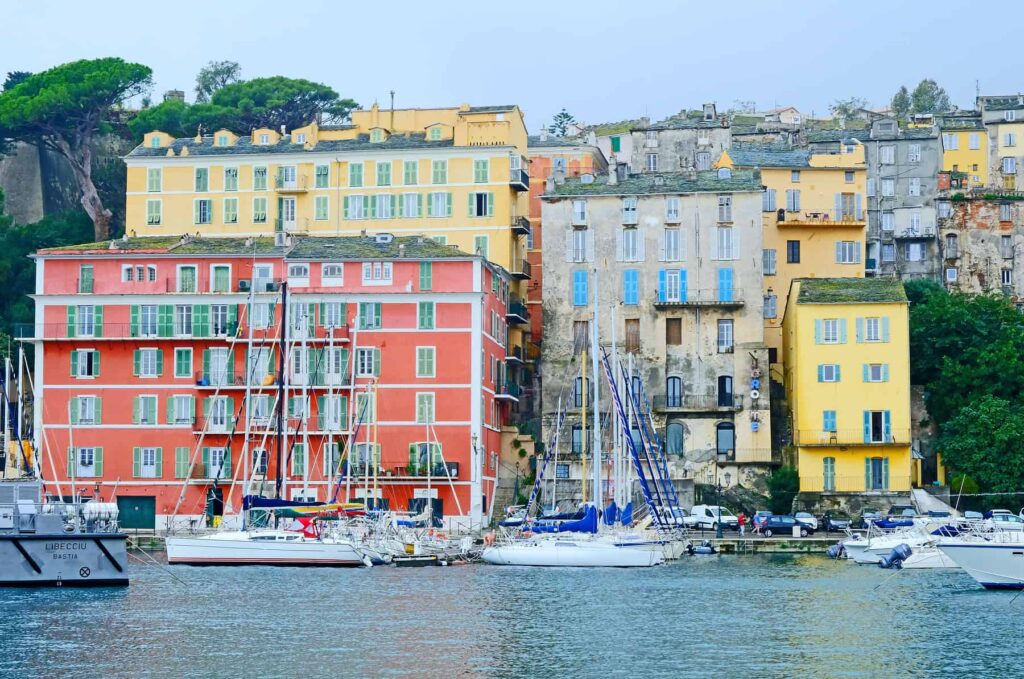
HEALTHCARE FACILITIES IN CORSICA
In case of emergency, seek help in one of the island’s medical institutions. Corsica has several hospitals providing good healthcare services and medical care to both residents and visitors. Key establishments include:
- Porto-Vecchio – Clinique de l’Ospedale
- Sartène – Hospital U Spidali
- Calvi – Centre Hospitalier Calvi Balagne
- Bonifacio – Hospital de Bonifacio
- Ajaccio – Centre Hospitalier d’Ajaccio
- Bastia – Centre Hospitalier de Bastia
- Corte – Centre Hospitalier Corte-Tattone
GENERAL PRACTITIONERS
Consultations, preventative care and general medical services may be addressed by family practitioners. Local pharmacies will point you to médecins généralistes in the area.
In Corsica, visitors from abroad are generally required to pay for medical consultations, as in the rest of France. The cost for a visit is typically around €25 to €30.
EMERGENCY NUMBERS
The following numbers can be dialled from any phone in Corsica to quickly access the appropriate emergency services.
- 112 – European Emergency Number
- 15 – SAMU (medical emergency)
- 18 – Fire Brigade (in Corsica, also assisting in medical emergencies)
- 17 – Police
- 196 – CROSS (Coast Guard, emergencies on the sea)
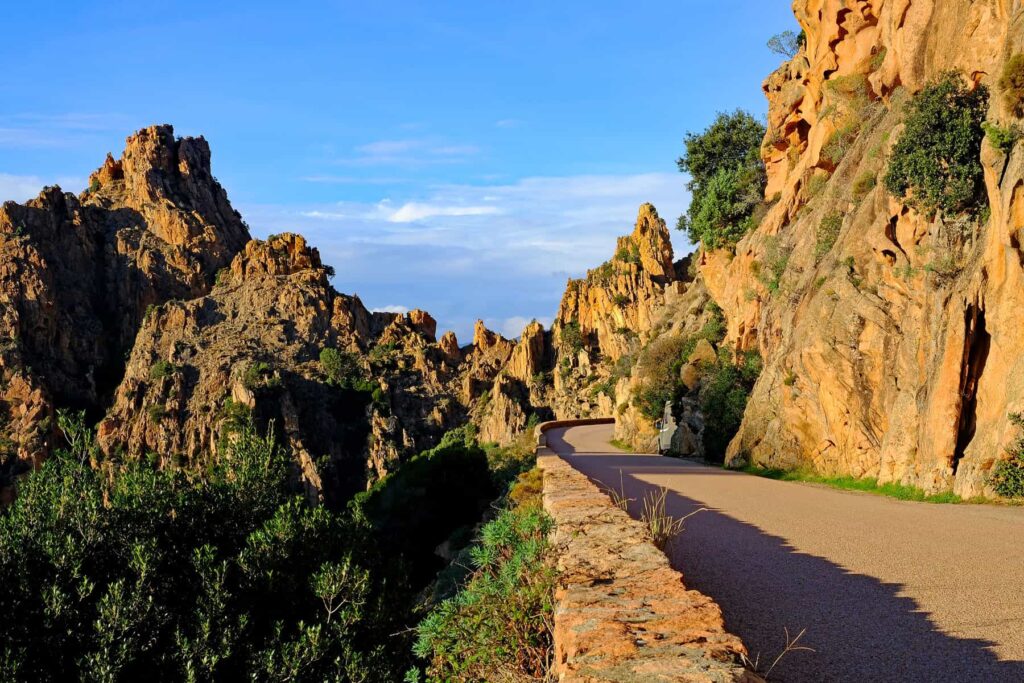
TRAVEL INSURANCE
Travelling to Corsica can be an exciting adventure, but it also comes with its share of risks, making travel insurance an essential consideration for any trip. Before embarking on your journey, securing appropriate travel insurance is crucial to protect yourself against unforeseen circumstances such as medical emergencies, trip cancellations, lost luggage, or other unexpected incidents.
Many insurance providers offer tailored policies that comply with Schengen visa requirements, ensuring coverage across multiple countries in Europe. These policies typically include medical expenses or even coverage for outdoor activities such as hiking. With varying options available, travellers can choose plans that best fit their needs, whether for a short getaway or an extended stay.
READ MORE
- Where to stay in Corsica – best places and areas for your visit
- Corsica’s best beach hotels and top coastal locations
- Best places to stay in Corsica for couples
- Renting a car in Corsica – complete guide for visitors
- Corsica – where to go and what to do
- Visiting Corsica – how to get there
- Is Corsica an expensive travel destination – money guide for visitors
- Getting around Corsica – do you need a car?
- 11 Charming Corsican villages that will steal your heart
- Top 3 destinations for a car-free holiday in Corsica
- Corsica or Sardinia? Find your dream Mediterranean escape
- What to avoid in Corsica – 11 common mistakes
- Driving in Corsica – tips and scenic routes ideas
- Visiting Corsica in winter – the ultimate travel guide
TRAVELLER’S COMPANION FOR A TRIP TO CORSICA – GRAB YOUR EBOOK!
33 Natural Pools and Waterfalls in Corsica
Descriptions – Directions – Coordinates


